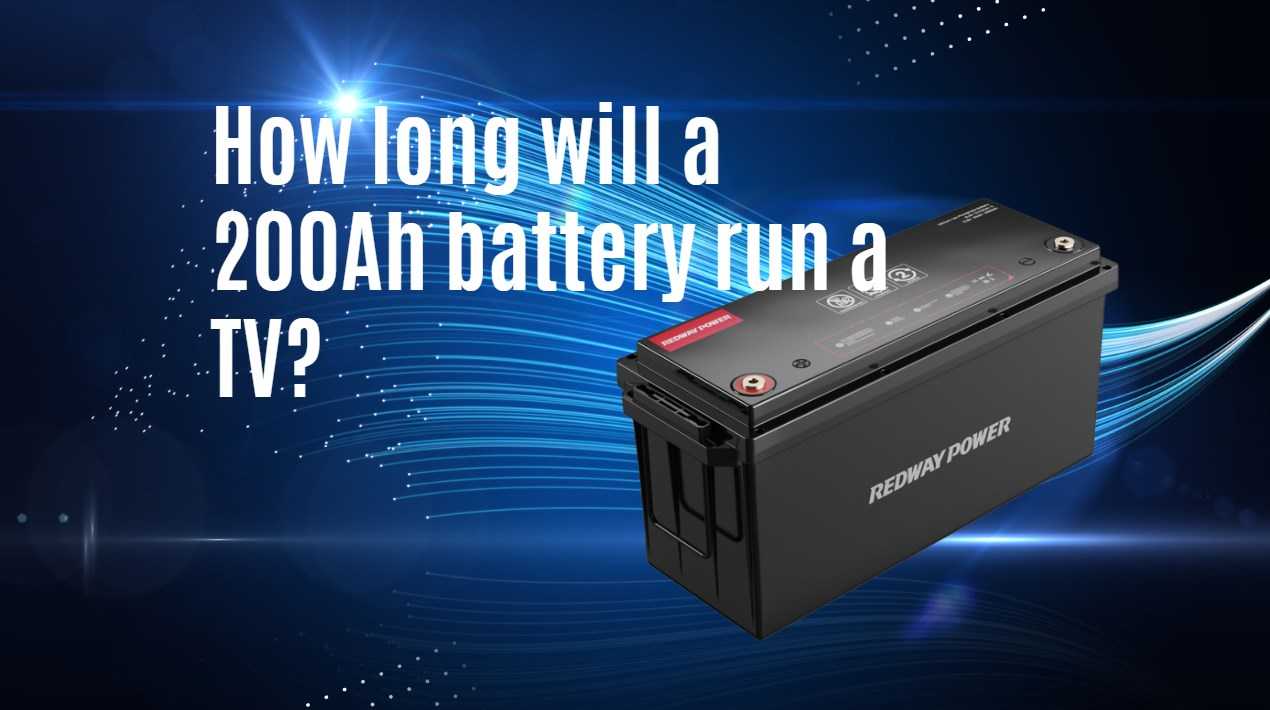A 200Ah battery can power a TV for several hours, depending on the TV’s wattage and the efficiency of the battery system. By calculating the power consumption and considering factors like depth of discharge, you can estimate how long your setup will last.
How Long Can a 200Ah Battery Run a TV?
The duration that a 200Ah battery can run a TV varies significantly based on the wattage of the television. For example, if you have a 100W TV, it could run approximately 21.6 hours under ideal conditions when considering inverter efficiency and depth of discharge.
What Is the Calculation for Determining Battery Runtime?
To calculate how long your 200Ah battery will last while powering your TV, you can use this formula:
For instance, using a 12V system with an 80% depth of discharge:
What Factors Affect Battery Runtime?
Several factors influence how long your battery will last:
- Inverter Efficiency: Inverters convert DC to AC power; their efficiency affects overall runtime.
- Depth of Discharge (DoD): This refers to how much energy is used from the battery before recharging; deeper discharges reduce lifespan.
- Power Consumption: The wattage rating of your TV directly impacts runtime; higher wattage means shorter operation time.
Factors Influencing Runtime
| Factor | Description |
|---|---|
| Inverter Efficiency | Determines how much energy is lost during conversion |
| Depth of Discharge | Affects overall battery lifespan and performance |
| Power Consumption | Higher wattage reduces operational duration |
What Types of TVs and Their Power Consumption?
Different types of TVs have varying power requirements:
- LED TVs: Typically consume between 30 to 150 watts.
- LCD TVs: Generally use around 50 to 100 watts.
- Plasma TVs: Often consume between 100 to 300 watts.
Understanding these differences is crucial for estimating how long your battery will last.Power Consumption by TV Type
| TV Type | Average Power Consumption |
|---|---|
| LED | 30 – 150 W |
| LCD | 50 – 100 W |
| Plasma | 100 – 300 W |
How to Optimize Battery Usage for Running a TV?
To maximize runtime when using a battery to power your TV:
- Choose Energy-Efficient Models: Opt for newer models with better energy ratings.
- Limit Brightness Settings: Reducing brightness can lower power consumption.
- Manage Usage Time: Consider using the TV less frequently or during peak solar hours if paired with solar panels.
How Does Depth of Discharge Impact Battery Life?
The depth of discharge significantly affects both runtime and lifespan:
- A higher DoD means more energy is used from the battery, which can shorten its overall life.
- For optimal longevity, it’s advisable to keep discharges around 50% or less whenever possible.
What Are the Best Practices for Battery Maintenance?
Maintaining your battery is essential for ensuring longevity and performance:
- Regular Charging: Avoid letting batteries fully discharge; recharge regularly.
- Temperature Control: Keep batteries in environments with stable temperatures to prevent damage.
- Periodic Inspection: Check connections and terminals for corrosion or wear.
How Can Solar Panels Enhance Battery Life for TVs?
Integrating solar panels with your battery system can significantly enhance its efficiency:
- Continuous Charging: Solar panels can keep batteries charged during daylight hours.
- Reduced Dependency on Grid Power: This lowers overall energy costs and reliance on traditional electricity sources.
- Sustainable Energy Source: Using solar energy contributes to environmental sustainability while powering your devices.
Expert Views”Understanding how long a 200Ah battery can run various devices like TVs requires not just knowledge about wattage but also about efficient energy management,” says Dr. Emily Brown, an energy systems expert. “By optimizing usage and integrating renewable sources like solar panels, users can significantly extend their operational capabilities.”
FAQ Section
- How long will a 200Ah battery run my TV?
The runtime varies based on your TV’s wattage; for example, it could last approximately 21.6 hours with a 100W television under ideal conditions. - What factors affect how long my battery will last?
Factors include inverter efficiency, depth of discharge, and the specific power consumption of your television. - How do I calculate my battery’s runtime?
Use the formula: Backup Time = (Battery Capacity × Voltage × Depth of Discharge) ÷ Power Consumption. - What types of TVs consume more power?
Plasma TVs generally consume more power than LED or LCD models; understanding these differences helps in planning usage. - What maintenance does my battery require?
Regular charging, temperature control, and periodic inspections are essential practices to maintain battery health and performance.
How Long Can a 12V 100Ah Lithium Battery Run TV




